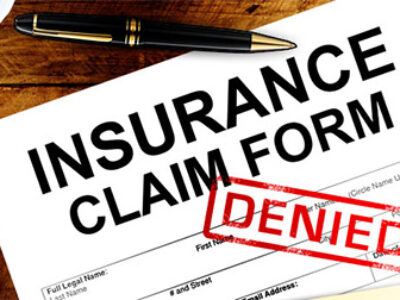People in California who work in the manufacturing industry are at risk of a lot of different types of workplace injuries. In particular, workers in machining or metalworking shops may be at risk of injury when their workplaces are not adequately safe. According to data from the Occupational Safety and Health Administration (OSHA), around 18,000 serious injuries and 800 fatalities occur every year among workers who operate machinery.
Amputations, lacerations, and crushing injuries may be the most dramatic types of injuries because they can cause a lot of suffering in an instant. However, the most common workplace injuries in manufacturing are repetitive strain injuries that accumulate over a prolonged period. Workers who lift materials or perform repetitive tasks can develop serious strains, especially when proper lifting techniques are not used.
Other common types of injuries in the manufacturing industry include hand tool-related injuries resulting from repetitive motion or the improper selection of tools. Some powered hand tools could also send flying debris at workers or cause burns. Workers in manufacturing are also at risk for injuries from chemicals and toxic substances that they work with and around. One of the biggest risk factors in manufacturing is poor ventilation in the workplace.
People who were injured while working in a manufacturing job may not be able to go to work while their injuries are healing. Their lost wages and medical expenses may be covered by their employer’s workers’ compensation insurance. An attorney may be able to help a worker in this situation file a workers’ compensation claim, ensuring that their workplace injuries do not result in a financial burden.
Expanding the Context: Real Dangers in California’s Manufacturing Sector
The industrial environment in California’s manufacturing sector, whether in metal fabrication, plastics, textiles, or food processing, exposes workers to a unique set of hazards. While some injuries may result from sudden, catastrophic events such as machinery malfunctions or explosions, others develop over months of repetitive strain, poor ergonomic support, and chemical exposure.
Beyond the risk of physical trauma, many workers are exposed to occupational diseases such as respiratory illnesses due to poor air quality and chronic contact with hazardous substances. Volatile organic compounds (VOCs), lead, benzene, chromium, and formaldehyde are common examples of airborne toxins found in manufacturing plants. When paired with inadequate ventilation systems or a lack of personal protective equipment (PPE), these substances can lead to long-term health complications that are harder to trace but equally damaging.
Additionally, shift work, particularly night shifts or rotating schedules, has been linked to higher injury rates. Fatigue, lack of natural light, and disrupted sleep cycles impair reaction time and judgment, increasing the likelihood of workplace accidents in industrial environments.
Employer Responsibility Under Cal/OSHA: More Than Just Compliance
In California, employers have a legal obligation to create a safe working environment under Cal/OSHA’s Title 8 safety standards. This includes implementing an Injury and Illness Prevention Program (IIPP), which must contain:
- Identification and evaluation of workplace hazards
- Regular inspections and corrective actions
- Ongoing safety training for all employees
- Provision and enforcement of appropriate PPE
- Documentation of injuries, near-misses, and safety meetings
Failure to implement or enforce these programs may not only lead to OSHA citations and penalties but also influence the outcome of a workers’ compensation or third-party liability claim.
Return-to-Work Programs and Vocational Rehabilitation
For many injured workers, recovery does not necessarily mean returning to their previous role. California offers Supplemental Job Displacement Benefits (SJDB) to those who cannot return to their pre-injury job. These benefits include a voucher worth up to $6,000, which can be used for retraining or skill development in another field.
Additionally, return-to-work (RTW) programs facilitate a gradual or modified return to employment. Employers are encouraged to offer modified duties such as limited lifting, shortened hours, or desk assignments while a worker recovers.
An experienced attorney can help you evaluate whether your employer is meeting their RTW obligations and whether vocational rehab might be a more realistic path.
The Medical-Legal Evaluation Process: QME and AME Explained
In California, if there is a dispute over the nature or extent of your workplace injury, the medical-legal evaluation process becomes critical. You may be examined by:
- A Qualified Medical Evaluator (QME)—appointed by the state if there is a dispute between you and the insurance company
- An Agreed Medical Evaluator (AME)—a neutral doctor whom both parties agree on to resolve the conflict
These physicians produce comprehensive reports that heavily influence the outcome of your case, including whether you are considered temporarily or permanently disabled and whether treatment is medically necessary. Your attorney will help you select the right QME specialty (e.g., orthopedic surgeon, neurologist, toxicologist) depending on your injury.
Third-Party Liability: When It’s Not Just the Employer’s Fault
While workers’ compensation is generally the exclusive remedy for job-related injuries in California, there are exceptions where a third-party lawsuit may be appropriate. For instance:
- A defective power tool malfunctions and causes a laceration
- A subcontractor fails to secure a heavy load that crushes your hand
- A chemical supplier fails to warn about the toxicity of a cleaning solvent
In such cases, your legal team may pursue both a workers’ comp claim and a third-party lawsuit, potentially increasing the total compensation you receive.
Timeline and Documentation: What You Must Do After an Injury
The steps you take immediately after an injury can significantly impact your eligibility for benefits. In California:
- You must report the injury to your employer within 30 days
- You should request and file the DWC-1 claim form as soon as possible
- The statute of limitations to file a claim is one year from the date of injury (or knowledge of injury in cumulative cases)
Documenting your injury with photographs, medical reports, witness statements, and OSHA violations can be critical if your claim is disputed.
Frequently Asked Questions
What injuries qualify for workers’ compensation in manufacturing?
All injuries sustained on the job including acute trauma (cuts, burns, fractures), repetitive stress injuries, exposure-related illnesses, and cumulative trauma disorders may be eligible. The injury must be work-related and reported timely.
How are repetitive strain injuries proven?
These are often established through medical evidence, job task analysis, and consistency of symptoms over time. A QME or AME can evaluate whether the injury is job-related.
What if my employer denies my claim?
You have the right to challenge the denial. An attorney can file for a hearing before the Workers’ Compensation Appeals Board (WCAB) and request a QME examination.
Can I get help returning to work?
Yes. You may be eligible for vocational rehab, job retraining vouchers, or light-duty accommodations. If your employer doesn’t offer modified work, you may receive additional support through SJDB.
What if I were injured by a defective machine?
You may be eligible to file a third-party personal injury claim against the equipment manufacturer while also collecting workers’ compensation.
Work With Hussain & Gutierrez to Protect Your Future
If you’ve been injured in a California manufacturing job, whether due to poor ventilation, repetitive strain, a catastrophic tool malfunction, or long-term chemical exposure, you don’t need to navigate the system alone.
The legal team at Hussain & Gutierrez has deep experience handling complex workplace injury claims. We help injured workers:
- File and maximize their workers’ compensation benefits
- Challenge claim denials or delayed care
- Explore additional compensation through third-party lawsuits
- Prepare for medical evaluations and hearings
- Secure vocational retraining and future job placement
You focus on healing. We’ll handle the rest.
Contact us today for a confidential review of your case.



